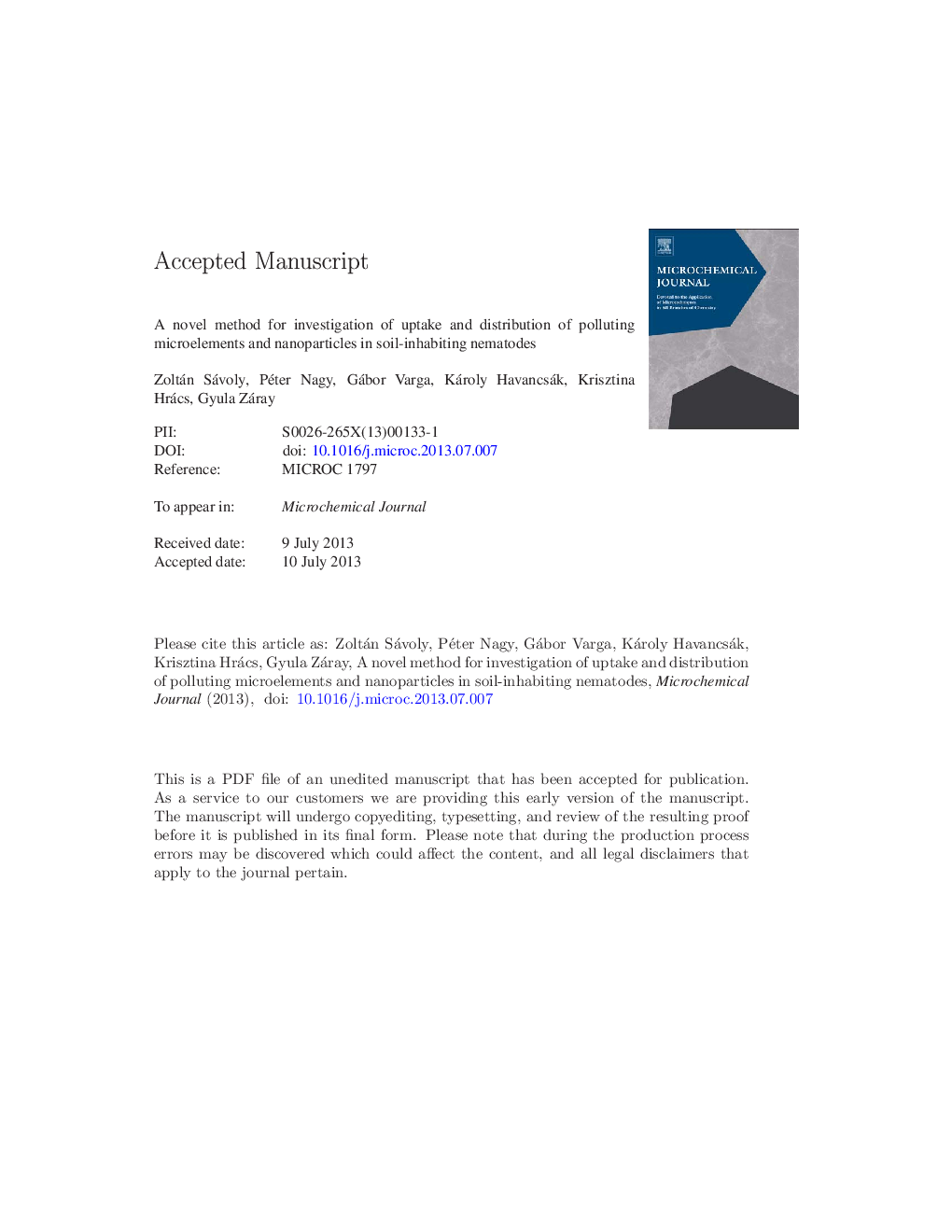| کد مقاله | کد نشریه | سال انتشار | مقاله انگلیسی | نسخه تمام متن |
|---|---|---|---|---|
| 7644021 | 1494884 | 2013 | 51 صفحه PDF | دانلود رایگان |
عنوان انگلیسی مقاله ISI
A novel method for investigation of uptake and distribution of polluting microelements and nanoparticles in soil-inhabiting nematodes
ترجمه فارسی عنوان
یک روش جدید برای بررسی جذب و توزیع آلودگی های میکروارگانیسم ها و نانوذرات در نماتدهای ساکن خاک
دانلود مقاله + سفارش ترجمه
دانلود مقاله ISI انگلیسی
رایگان برای ایرانیان
کلمات کلیدی
موضوعات مرتبط
مهندسی و علوم پایه
شیمی
شیمی آنالیزی یا شیمی تجزیه
چکیده انگلیسی
Nematodes are key components of soil ecosystems and important bioindicators. The effect of soil contamination on soil biota may be studied very well with nematodes due to their small size, semipermeable cuticle and complex life processes. The uptake of three elements (copper, chromium and zinc) was studied by means of electron probe microanalysis (EPMA) and focused ion beam (FIB) technique. Adult females of the plant-feeding nematode, Xiphinema vuittenezi were investigated. The animals were treated with 1Â mmol/dm3 Cu(NO3)2 or CuSO4; 50Â mmol/dm3 K2CrO4 solutions and 50Â mg/dm3 nano-ZnO suspension. Following the treatment, nematodes were rinsed, plunged into liquid nitrogen for 2Â min in order to carry out quick-freezing and lyophilized for 72Â h. The stylet and cuticle were studied in case of the CuSO4 treated worm by EPMA. In the cuticle, the distribution of copper and sulfur showed high correlation. In the stylet and the lip surrounding the stylet, much more sulfur was found, than elsewhere, while the copper intensity was higher than the average just in the lip region. In case of nematodes treated with Cu(NO3)2 or K2CrO4 solutions or ZnO suspension, focused ion beam technique was applied in order to prepare cross-sections. One-dimensional distribution of the treating elements, furthermore phosphorus and sulfur was studied. In all cases the treating elements (Cu, Cr, Zn) and the above-mentioned two essential microelements showed a similar pattern: decreasing intensity toward the center of the cross-section. Consequently, the main element uptake route is the cuticle and not the gut. The correlations between the treating elements and phosphorus as well as sulfur (high correlation for Cr and P; Cr and S; Cu and S; moderate correlation for all other combinations) suggest the role of these elements in toxicant binding and detoxification.
ناشر
Database: Elsevier - ScienceDirect (ساینس دایرکت)
Journal: Microchemical Journal - Volume 110, September 2013, Pages 558-567
Journal: Microchemical Journal - Volume 110, September 2013, Pages 558-567
نویسندگان
Zoltán Sávoly, Péter Nagy, Gábor Varga, Károly Havancsák, Krisztina Hrács, Gyula Záray,
